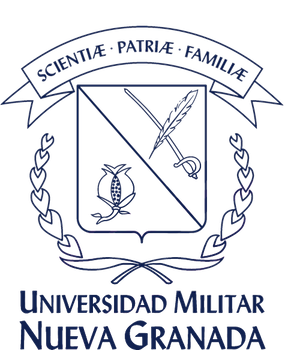Verbal protocol on identifying self-regulation skills
Abstract
This document contains the results of a qualitative research whose purpose was centered on the comparison of the results obtained through a self-report questionnaire called Test Motivated Strategies for Learning Questionnaire (MSLQ) (Printich et al., 1991). This comparison sought to investigate the most effective way to get certain characteristic elements in three students as self-efficacy, use of cognitive strategies, metacognitive and resource management that have or use when faced with a learning environment based on the web. The technique used in the comparison is called verbal protocol (Newell and Simon, 1972). Through which it was possible to identify three learning paths, which allowed visualization of how self-regulated was the student in the learning process. Further comparison of the verbal protocols made it possible to demonstrate the improvement of student achievement when it uses a fixed metacognitive scaffolding.
Downloads
References
Azevedo, R., Guthrie, J. y Seibert, D. (2004). “The role of self-regulated learning in fostering students’ conceptual understanding of complex systems with hypermedia”, en Journal of Educational Computing Research 30 (1), 87-111.
Azevedo, R., Moos, D., Greene, J., Winters, F., y Cromley, J. (2008). “Why is externally-facilitated regulated learning more effective than self-regulated learning with hypermedia?”, en Education Tech Research, Dev 56, pp. 45–72
Azevedo, R., y Cromley, J. G. (2004). “Does training on self-regulated learning facilitate students learning with hypermedia?”, en Journal of Educational Psychology, 96(3), 523-535.
Bruner, J. S. (1978). Learning how to do things with words. In J. S. Bruner and R. A. Garton, (eds), Human Growth and Development (pp. 62–84). Oxford: Clarendon.
Chang, K., Sung, Y., y Chen, I. (2002).“The effects of concept mapping to enhance text comprehension and summarization”, en The Journal of Experimental Education, 71 (1), 5-23.
Newell, A., y Simon, H. (1972). Human problem solving. Englewood Cliffs, NJ: Prentice Hall.
Pea, R. (2004). “The social and technological dimensions of scaffolding and related theoretical concepts for learning, education, and human activity”, en Journal of the Learning Sciences 13: 423-451.
Pintrich, P., y García, T. (1991). “Student goal orientation and self-regulation in the collegeclassroom”, en M. L. Maehr y P. R. Pintrich (Eds.). Advances in motivation and achievement: Goals and self-regulatory processes, Vol. 7. Greenwich, CT: JAI, pp. 371-402.
Renkl, A., Atkinson, R., y Große, C. (2004). “How fading worked solution steps works – A cognitive load perspective”, en Instructional Science, 32, 59-82.
Shapiro, A. (2000).“The effect of interactive overviews on the development of conceptual structure in novices learning from hypermedia”, en Journal of Educational Multimedia y Hypermedia, 9, 57–78.
Wecker, C., Kollar, I., Fischer, F. y Prechtl, H. (2010). “Fostering online search competence and domain-specific knowledge in inquiry classrooms: Effects of continuous and fading collaboration scripts”. Paper presented at the 9th International Conference of the Learning Sciences (ICLS), Chicago.
Wood, D., Bruner, J., y Ross, G. (1976). “The role of tutoring in problem solving”, en Journal of Child Psychology and Psychiatry and Allied Disciplines, 17, 89-100 (Addresses the concept of instructional scaffolding).
Wu, H., y Krajcik, J. (2006). “Inscriptional practices in two inquiry-based classrooms: a case study of seventh graders’ use of data tables and graphs”, en Journal of Research in Science Teaching, 43 (1), 63–95.
Chi, M., De Leeuw, N., Chiu, M., y LaVancher, C. (1994). “Eliciting self-explanations improves understanding”, en Cognitive Science, 18, 439–477.
Chi, M., Siler, S., Jeong, H., Yamauchi, T., y Hausmann, R. (2001).Learning from human tutoring”, en Cognitive Science, 25, 471–534.
Chi, M., Siler, S., y Jeong, H. (2004). “Can tutors monitor students’ understanding accurately?”, en Cognition and Instruction, 22, 363–387.
Dabbach, N. y Ki tsantas, A. (2005). “Using web-based pedagogical tools as scaffolds for self-regulated learning”, en Instructional Science 33: 513–540.
Fretz, E., Wu, H., Zhang, B., Davis, E., Krajcik, J., y Soloway, E. (2002). “An investigation of software scaffolds supporting modeling practices”, en Research in Science Education, 32 (4), 567-589.
Hadwin, A. y Winne, P. (2001). “CoNoteS2: A software tool for promoting selfregulation”, en Educational Research and Evaluation 7 (2/3), 313-334.
Hill, J., y Hannafin, M. (2001). “Teaching and learning in digital environments: The resurgence of resource-based learning”, en Educational Technology Research and Development, 49 (3), 37-52.
Jacobson, M. y Archodidou, A. (2000). “The design of hypermedia tools for learning: Fostering conceptual change and transfer of complex scientific knowledge”, en Journal of the Learning Sciences, 9, 145-199.
Lee, H., y Songer, N. (2004). Expanding an understanding of scaffolding theory using an Inquiryfostering science program, manuscrito no publicado.
Ministerio de Educación Nacional (2009).Aprender y educar con las tecnologías del siglo XXI. Colombia digital.













